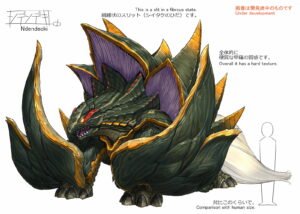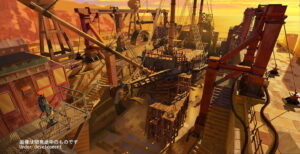August 2024 Update
Development Update
The Paris Olympics have begun. But perhaps to JRPG fans, the San Diego Comic Con at the end of July was the bigger news?
This month’s ARMED FANTASIA report is coming to you from Ishii.
ARMED FANTASIA August 2024 Project Report
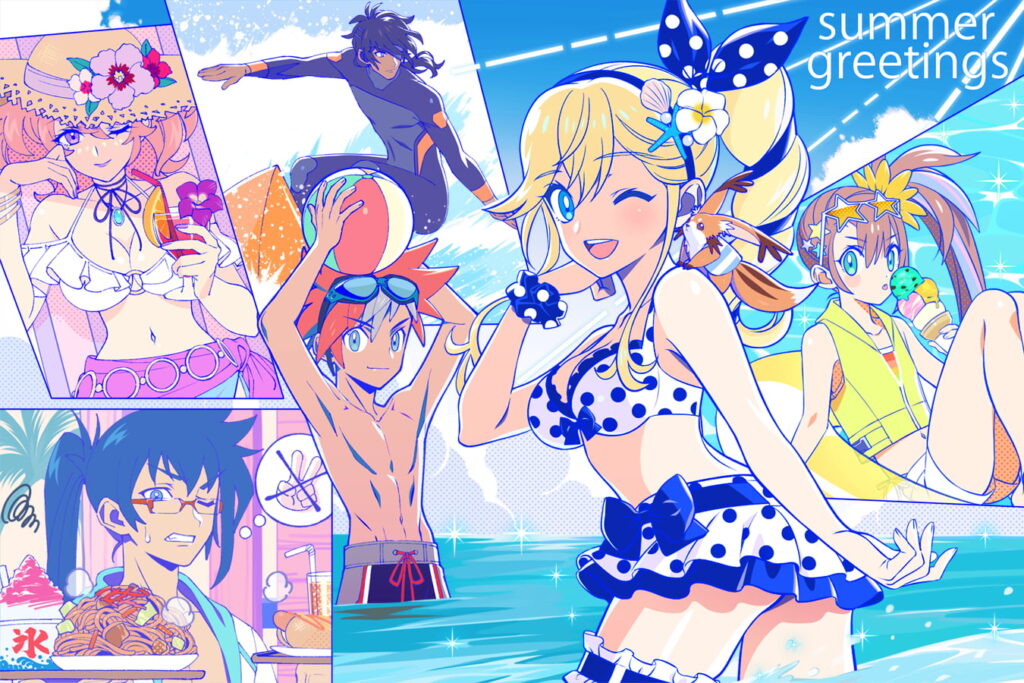
Chief Director Ishii here. It’s August now. How are you all faring midst the constant heat?
Ingram and the other characters are having fun playing in the ocean in the illustration, but anomaly attacks apparently happen quite a lot near bodies of water in Londenium. This means you can’t even let your guard down when you’re on a boat…
In last month’s report, Kaneko-san went over the flow of how an anomaly goes from an idea to an in-game model from the perspective of the planner/person making the order. This time, I’d like to describe how creating an anomaly goes about from the designer’s POV.
In that regard, I hope you’ll read last month’s report before reading this one. Some of you may be disappointed that the images are the same as last month’s, but that’s just to make the explanations easier to understand. We’re not actually sitting here thinking how great it is cost performance-wise to be able to use the same images twice…
Listening
A designer’s job first begins once they receive a series of strange messages from Kaneko, as if he’s Nostradamus releasing some new quatrains. Luckily, the person who wrote these messages is right in front of the designer, so the designer can wait for the busy-looking old guy to get some time and ask questions.
“Ndendecki is a UMA that looks like a big soft-shelled turtle.”
“It’s a resilient enemy. It should have four legs.”
“It has long hair growing out of the rear part of its shell.”
Little by little, the designer pulls out more information.
After that the designer thinks: soft-shelled turtles aren’t very resilient, and a flat design might not look very good for a creature on the ground, so they start the design work based on the “four-legged turtle” image.
Since it has four legs, the silhouette of that famous turtle kaiju doesn’t really serve as a reference. Common four-legged turtles in Japan include the soft-shelled turtle, the Reeves’ turtle, and the Red-eared slider – all turtles with flat shells. When thinking about how to make it look good on screen, there might need to be a course correction.
Trying out a Sketch
In other places of the world, there exist turtles with high shells such as the tortoise and the Asian box turtle, but since we’re designing an anomaly here, I decided to use the alligator snapping turtle as the motif to make it easier to understand.
But even though the alligator snapping turtle is big, it also has a rather flat shell. I feel that it’s important that the monster looks opposing when facing off with the characters and that it has a large silhouette when looking at it from the front, so I decided to make more use of the spikiness of its shell and bring up its torso as much as possible while keeping it on four legs so that it’s sort of puffing its chest out.
Naturally, this means it’ll be looking down on the characters, so I then extended its neck and made it have a small face in order to emphasize its giant size.
By putting the knees of its back legs on the ground, I can also make it look heavier and more stabilized. Then, by adjusting the design of the spikes so they aren’t hidden by the raised-up part of its shell, I can make its front silhouette more interesting.
Here’s the design that features thick, large scales visible from the front with long hair growing out from the back of its shell.
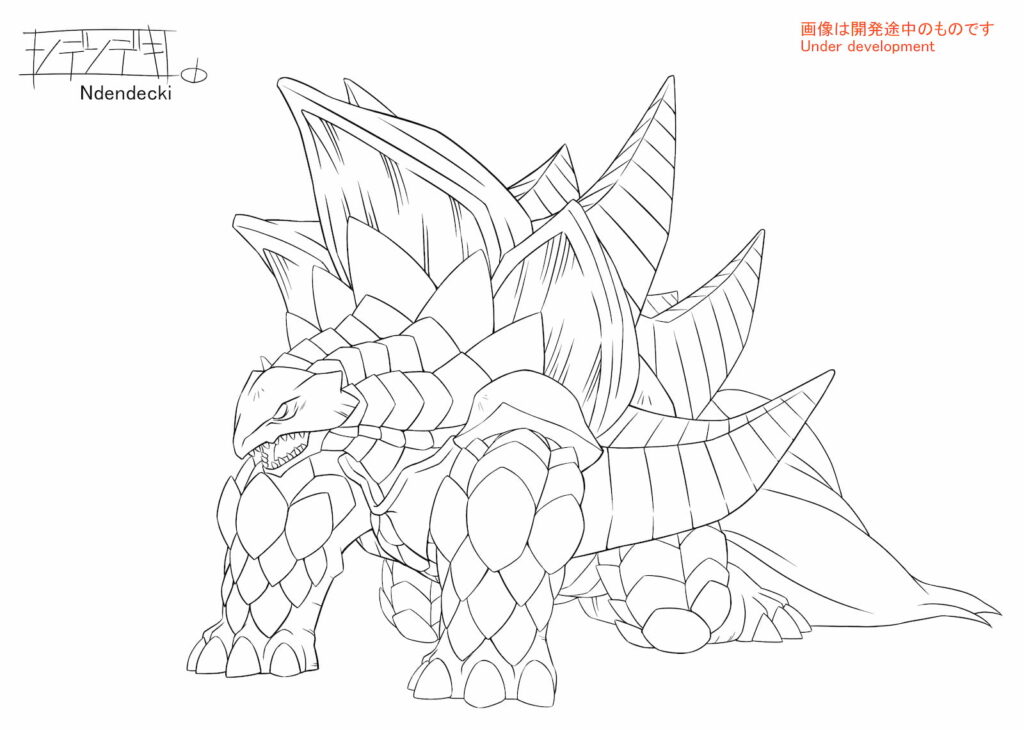
Hmm… Something’s missing.
Listen to your Heart
My heart was telling me that something was missing, so I gazed upon the design and began to think. Then, I unconsciously let my brush wander while I continued to think, but I still couldn’t figure out what was missing. This happens a lot, and in the end, it was only when I was taking a bath that I realized the monster didn’t look resilient enough.
I could have been fine if I just turned in the original design and said “It’s really resilient,” but it would obviously be better if I could add something to the monster that makes it feel more resilient, so I used the inspiration I got in the bath to add shields to its front legs.
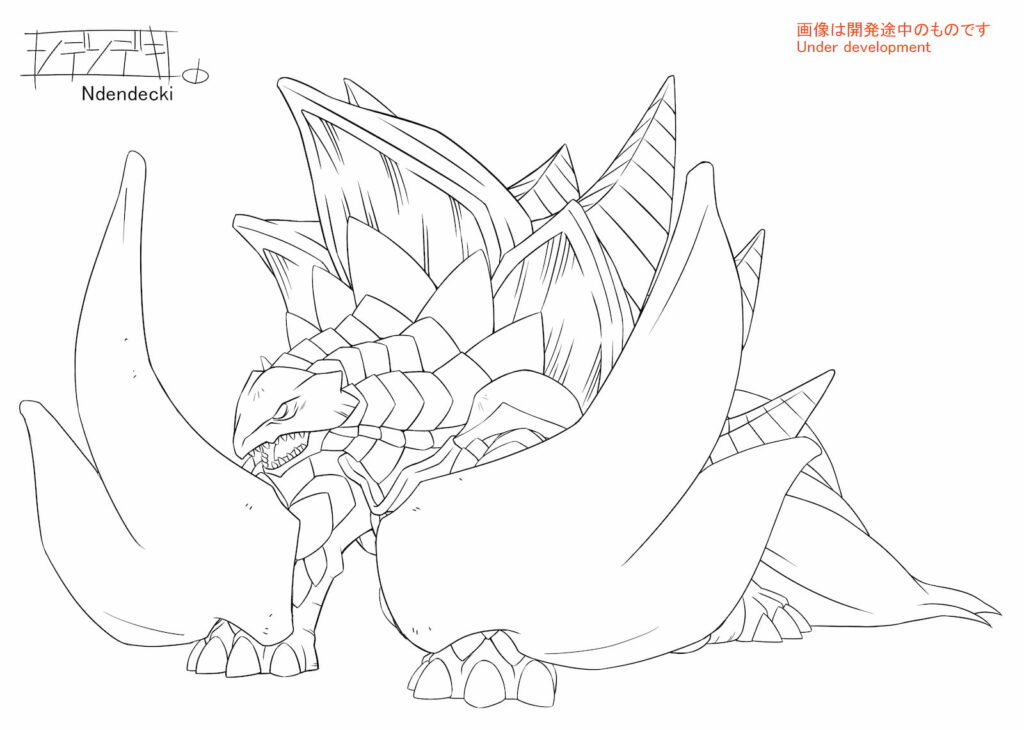
Now it definitely looks like a formidable anomaly.
Since the lines that make up the base of its neck reminded me of a lotus/lotus seat, I used those lines to create the form you see now. Incidentally, it’ll also make use of these shields through a gimmick in battle.
Once I finish my trial and error and become happy with the design, I have Kaneko check it.
Have the old guy check it
Once I have Kaneko do the final check and get his OK, my design work is done for now. This is actually a pretty hard step, though. The important thing to consider here is the basis that Kaneko uses to do his anomaly checks.
Most people may think he simply checks anomaly (monster) designs based on whether they look “cool” or “scary.” Kaneko is someone who laughs when he runs into something surprising, so if he doesn’t laugh at an anomaly design the first time he sees it, it doesn’t pass.
In other words, the design needs to have something that takes Kaneko by surprise, whether it’s the silhouette or a gimmick with the monster. In the past, someone failed to realize this, and things took a turn for the worse, and he started sending orders to someone else.
When I showed him Ndendecki’s design, he said: “Yeah, turtles these days are all about their shields, not their shells. I had the same feeling! Let’s go with this! By the way, I thought up the name “floral egg turtle”…what do you think?
Definitely a weird conversation to have, but he was smiling as he spoke to me. While I felt relieved inside, I didn’t let it show in my face and just said “Yeah, I agree,” naturally shifting topics with a response that didn’t really do much to continue the conversation.
But these conversations sometimes become the driving force behind coming up with new ideas and can make requests come in from different angles, so I can’t let my guard down until the very end. It’s fun work as long as the schedule doesn’t get crazy, though.
Passing it Along
After that, I pass on the finished design art to bee tribe and have them add what’s necessary in order to make it gel with their production environment.
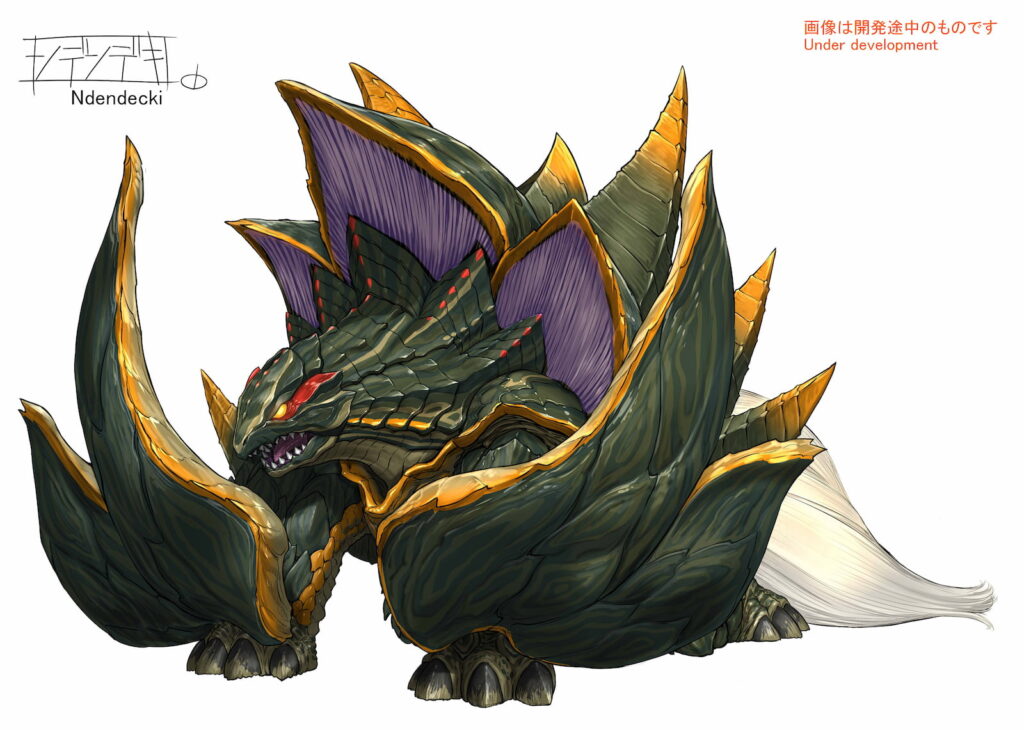
Last month in Kaneko’s report, he mentioned how meticulous he is about his checks, and the truth is, I’m always excited about what sort of adjustments get made during this supplementary art/model production period.
It’s always very fun to watch new things get created from adjustments made during the work in the studio, when your own work passes into someone else’s hands.
Of course, I go into detail about points that I don’t really want them to change, but I feel that this work is the same as designing a kaiju suit for a monster movie in that you need to rely on other people to get the job done. (And if you feel like your own design is perfect and don’t want anyone to modify it, then you need to finish it on your own.)
Transforming it into a model
During the model check step, the checker will often take a good look at the overall parts balance and its face, or whatever part can be construed as its face. With Ndendecki, both the modified art and model we got from bee tribe had hardly any changes made to it aside from brightening the color of the slit parts.
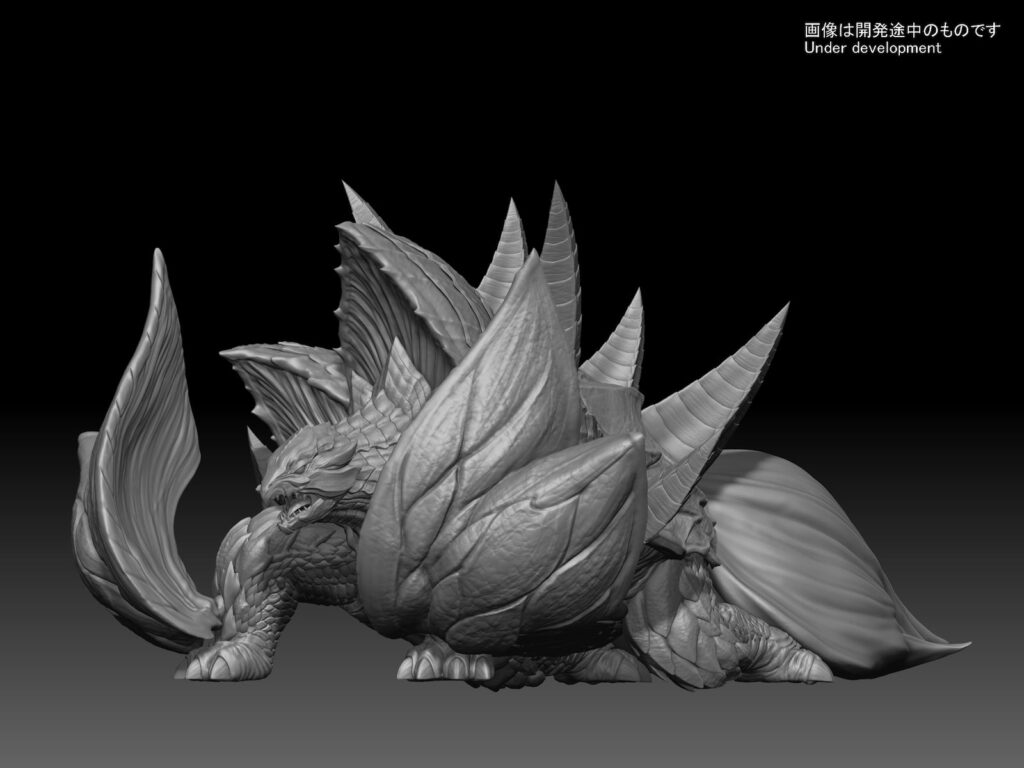
The adjustments they made were amazing, and it looks way more alive now. Now I really can’t wait to see it in motion.
In Conclusion
This is how much love we put into every one of the anomalies you may run past while you’re playing the game. What’s that? There’s no way that anomalies drenched in Kaneko’s unique particularities wouldn’t leave an impression on you? True… But we’ll still keep doing our best to make sure all the different things we create leave an impression on your hearts.
That concludes this month’s report. See you next month.

